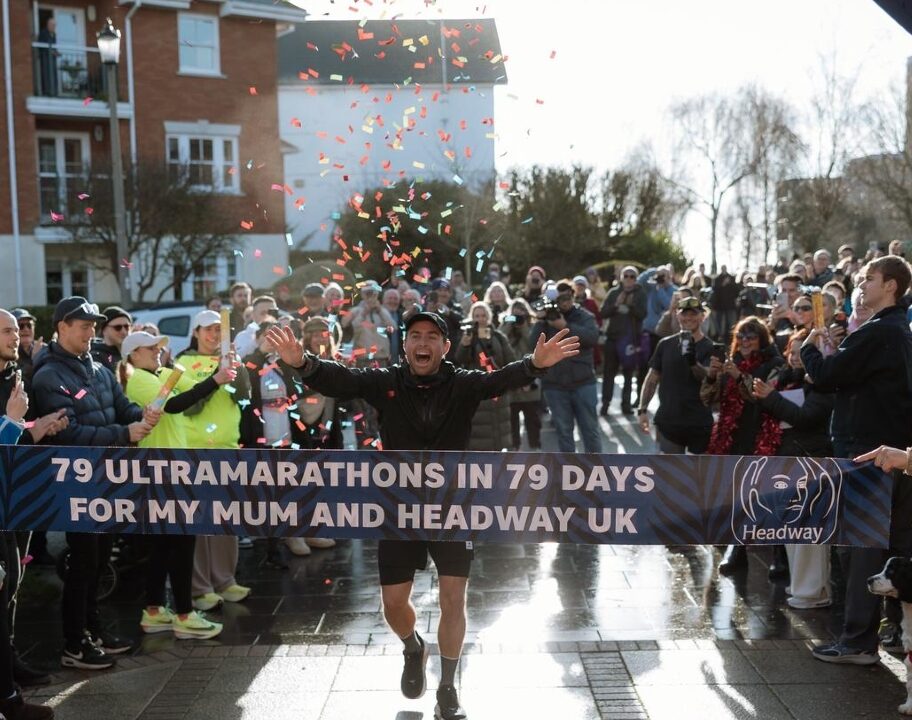Having come agonisingly close to winning the Montane Winter Spine Race last season, Jack Scott left no stone unturned in his preparations for this year’s event.
The 26-year-old, who ended up shattering the previous course record with an incredible performance, saw those careful preparations come to fruition a fortnight ago in Kirk Yetholm.
Sharing his training secrets after the race with his sponsor Inov8, he said long days out on the course and a structured gym programme, combined with a crazy treadmill workout helped him have the race of his life on the Pennine Way.
“I wasn’t able to do what I wanted in training”
After shifting his focus from fell running to the Spine Race in November, problems quickly started to emerge after a training run from Gargrave to Tan Hill for the Staffordshire local.

“Carrying full kit for the first time in the year and accompanied with horrendous weather, I ran from Gargrave to The Tan Hill Inn. Unfortunately, my body let me down here.
“I had unusual fatigue and shudders down my IT band. From the Sunday morning after the 54 miles, all the way to Edale and the start of the race in January I found training extremely challenging.
“In December I woke up every day with an issue of some sort. Whether that be my Achilles, ankle or a dull ache from a bursa on the inside of my knee. Luckily the IT band issue vanished after a 10-day stint of clever, patient training in the gym.
“All the other restrictions could be managed, but it was unpleasant and for the first time in 6 years I wasn’t able to do what I wanted in training.”
“There were only two days in December where I ran back-to-back”
Giving some context to the predicament he found himself in a month out from the race, Scott pointed out that despite having to run off less than an hours sleep for three straight days at the Spine Race, he had barely been able to run back-to-back days in December.

“To put it into perspective, there were only two days in December where I ran back-to-back. These were however, superb days on the Pennine Way, Saturday was the 39 miles from Alston to Bellingham and Sunday was the final 27 mile stretch from Byrness to Kirk Yetholm.
“This was the weekend of 9th/10th of December, so five weeks out from the race. The 39 on the Saturday was probably the best training run of that distance I’ve ever managed to do.
“I took note of what was good and what was bad, working on my weaknesses in the gym. In December I logged over 15 hours of gym work.
“This helped keep me sharp without loading the body with any unnecessary mileage or stress, trying to let those niggles settle. All the time I was thinking survive the training block, be resilient and the race is the treat.”
The “extremely effective” treadmill power hour
With his run training limited due to the need to be cautious, Scott came up with an innovative and effective training method he calls “The Uphill Treadmill Power Hour”.

This workout, which involved a short warm up before ramping up the incline on the treadmill to the maximum setting (25% gradient for Scott), saw the Brit spend an hour gaining anywhere between 1375-1525m of elevation gain.
“This was a session I brainstormed and executed a few times which I thought was extremely effective. The pace I’d manage during the hour would vary. The minimum pace would be 5.4 kmph (17:54/mile) and the maximum would be 7.2 kmph (13:24/mile).
“A session like would generate between 4500-5000ft of climb and cover no more than 3.8 miles. The average pace across all my Treadmill Power Hours was 16:09/mile.”
By doing this type of session, he says, Scott was able to get the most bang for his buck elevation wise without putting his body under an unnecessary amount of stress.
“What I was doing here was working at Spine Race pace (my average for the race time was 16:15/mile) but also exploring a very high intensity session for my heart and lungs (my heart rate would easily be above 175 for 50 minutes during a session like this).
“I was keeping fit and training race specifically. The sessions were tough and my elevation stats went through the roof, but the mileage was low and manageable.”






